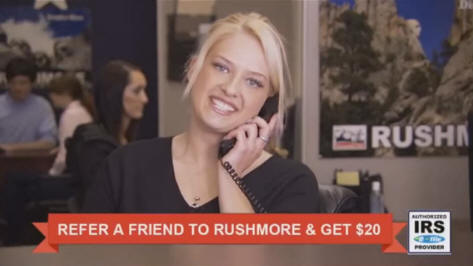|
|
||
| 2. SETTING UP AN OFFICE | 3. FINDING CLIENTS | |
|
So you want to open your own tax office!? Before you do ANYTHING: You need an EFIN. You will find all the information on how to acquire one through the User Login > TO DO link. An EFIN is an I.R.S. provided Electronic Filing Identification Number. Without one you CANNOT E-FILE period! Initially you will need to form a business structure. Options are to form a business name, a corporation or a limited liability partnership. Speak to your accountant or a business consultant to determine which structure best suits your needs.
Office factors to consider are:
The emphasis is on the word "Your" because it is You who has the most to risk and these factors determine potential success of any business, in particular, an income tax office. Tax offices are generally NOT year round offices. They open from early January and close around the 15th of April each year. Approximately 100 days. According to the I.R.S. they are also required to be open at least eight hours per week during the off season to offer copies or advice or to complete and prepare returns to those who may have filed extensions. The rent, however must be paid for all twelve months as do the utilities. So the tax office must provide income to pay for not only the employees payroll and state and local taxes during this time but also the overheads for the rest of the year. In addition, budgets should be in place for marketing and advertising expense for the following year plus printer cartridges, mountains of copy paper and other stationery items the office will need in preparation for the next tax season. This brings us to the break even point. That is, the income needed to cover all these costs with some left over to be deemed profit. Your money. According to research, more than eight percent of businesses fail before the first two years passes. Therefore you have to consider "will my business be one of those or one that succeeds". The decision is yours and based on the fact you're now reading this you have already made that decision. So we must now look at the factors which determine success. 1. Choosing a location.
On the other side of the coin, Burger King, Wendy's et al simply open one of their restaurants within a hundred yards of a McDonalds. Without spending the millions that McDonalds does. So in the world of tax preparation, the "McDonalds" is H & R Block. No H & R Block generally prepares less than one thousand tax returns with a few preparing and e-filing in the five to ten thousand range. Decent offices e-file in the range of 2-3,000 offices a year which does not include paper returns which could add an additional 1-200 more. A new Rushmore Tax office within a couple hundred years of an H & R Block should prepare in the vicinity of twenty percent of the nearest H & R Block within its first year. Advertising, marketing and store visibility determine much of this success. Close proximity to the following certainly helps in addition to being near an HRB. Check Cashing store, Subway, 7-Eleven, Dollar Store, any Fast Food restaurant or gas station. Visibility is key here. Corner retail storefronts with decent out front parking and medium to heavy pedestrian traffic is very helpful. 2. Having some business experience helps.
First, you need to understand that incoming must exceed outgoing unless you have a BIG line of credit. Overheads can get out of control by overstaffing, purchasing the BEST computers, desks, leather chairs, channel lettered signs etc... More so by paying staff a ridiculously high hourly wage or salary plus large bonuses. Business frugality without being cheap is what makes income tax office owners successful and independently wealthy if done right. Tax season comes in waves. The early filers want their refunds fast and will often pay a premium to access a portion of their refund in advance of the I.R.S. releasing the full refund amount. These dates are usually between January 20th thru February 10th. Three weeks where your office can and should prepare anywhere from 20-70 tax returns per day. The second wave is during the last 7-10 days of tax season. April 5-15th. Depending on the demographic you have chosen to open your tax office in, the early season can be huge and the latter less so, or the early very weak and the latter quite overwhelming. Staffing heavily during these times and less so during others will save your office a lot of expense. Good business requires plenty of common sense. Not wastefulness. Don't waste money on shop a dockets or shopping cart advertisements. Road side signs and television commercials can often be far less expensive. 3. Do you have the time?
Tax offices are generally open 60-80 hours per week. Each hour should generate on average one tax return. This does not happen from day one but over the course of a tax season, with the previous example of waves, the average of one return per hour should result in approximately 1,000 tax returns over the course of tax season. Most offices do not approach anywhere near 1,000 returns in their tax season. Some do. More often than not a first year office should see somewhere between 200-600 returns in their first year. Assuming the nearby HRB e-files 2,500 returns it is by no means inconceivable that your office will prepare and e-file in the range of 400-500 tax returns. You will ONLY accomplish this is you are the manager and you are monitoring every return before e-filing. Including pricing and service. Unless your office manager has been selected and trained by Rushmore Tax Service Inc and is proficient in most aspects of office functionality, managing payroll and preparing tax returns we cannot guarantee anywhere near these numbers. Your time in setting up, learning, employing and marketing is your one prime directive. Only your time can accomplish this. 4. Are you prepared to spend?
Finding a good retail location requires money for security deposit, first and last months rent. Down payment of utilities, decent computers, furniture, printers, posters, signs, banners, business cards, stationery, carpet, memberships, I.R.S. screening fees, costs to incorporate, uniforms, coffee makers, coffee, donuts...etc... And the money doesn't start coming in until your tax preparers have prepared taxes. Therefore you also need capital to pay payroll. And payroll taxes. And the payroll company. Usually about four weeks of payroll is required prior to your first bank deposits appearing from your banking partner in the early weeks of February. Rent and utilities also are due so it is wise to budget for these things well in advance. A decent processing computer, plus workstation computers cost money. Sometimes as much as several thousand dollars. Then there is the main printer capable of printing upwards of 60 sheets per minutes and capable of handling up to and even more than 150,000 sheets per tax season. To print checks you will need another printer using MICR toner. Not cheap at around a couple hundred dollars per cartridge. Though one printer will generally last a few years if well cared for. Posters for the window and walls (laminated) is another few hundred dollars. Signage can add another few hundred to a few thousand dollars so your office is visible both during the day and evening. Professional desks, preparer chairs, client chairs and waiting area chairs adds another few thousand though much can be found in good to excellent condition using websites like www.craigslist.com. The bottom line is, if you want to truly succeed, the first year can be an awesome expense but once the set up is complete, only a little extra is required in advance of each new tax season to keep an office operational. Our purpose is to set the scene for future gain. Sometimes as early as the first tax season depending on your A, B, C's and D. |
||
|
REPEAT REPEAT Before you do ANYTHING: You need an EFIN. You will find all the information on how to acquire one through the User Login > TO DO link. An EFIN is an I.R.S. provided Electronic Filing Identification Number. Without one you CANNOT E-FILE period! One tax office operator was asked repeatedly had they applied for their EFIN yet. The answer was always "Yes" or "I've got it under control". I learned the EFIN application had not been submitted until the 21st of December. An EFIN when approved takes between 4-6 weeks to acquire! Hasten to say, the tax class was taught using one of our own EFIN's and thankfully the letter arrived during the first week of January by some dumb luck! Don't let the lack of an EFIN be your office's undoing. When setting up an office visibility and a sense of comfort is key. I recall a conversation I had with my local Teriyaki place several years ago which began with me asking the owner why the walls were adorned with pictures of Greece, Italy and several other European locations I could not recognize. Her response was that they were just pictures. I mentioned to her the television was broadcasting a soap opera and there were no patrons at any of the tables. Simply put I suggested she change the framed pictures to display laminated posters of her menu items and to play Japanese music over the speaker system she had already installed. It didn't take but a few weeks for people to start entering and staying rather than always taking out their meals. She changed the television to the national news (CNN) or sports station (ESPN) which most people don't mind watching while eating. Overall the ambience of the place had changed. Similarly, when a potential client (and I use the term client because they aren't customers because they're not buying anything) and they're expected to pay considerably more for your services than their average shopping errand.
The exterior of your retail storefront should be highly visible. It should be on the ground or first floor. Signage should be either a lighted box sign, channel lettering (if required by the landlord) or a large panel ad with spotlights highlighting your business name. Windows should be awash with colorful posters detailing your cash advance offers, local discounts, quick refund turnaround, office hours etc. Interior should begin with a reception desk with a "Welcome to...." adhesive backed decal on its front side.
Waiting area should posses no less than eight chairs (which projects that you have times when you have at least eight persons waiting) and a table area with coffee, popcorn and the like. These cheap effects keep people busy and indicate you care about them while they wait to be served. A television can be mounted in this area to help clients while away their time while waiting to be seen. Magazines on a small table are also recommended.
A child's play area with a few books and toys or colorful play mat is encouraged if you have the space.
Walls should display posters associating the images with the business name as shown at picture left. Business logo and name should have prominence so the client has little doubt as to whom they are writing the check payable to. This was highlighted when a client of mine, a client of several years asked me to whom he should make the check out to. I asked him if he had any idea where he was and said "No, but that doesn't matter, I would go anywhere else!" It may have appeared as a sideways compliment but to be honest I had little doubt he would ever mention my company name to anyone else because he didn't know where he was choosing to file his taxes! We receive from one of our offices more than two hundred referrals each year. The referral fees cost that office more than $5,000 each tax season but generate more than $45,000 in additional tax preparation revenue at a minimum each tax season. When factoring in addition bank fees which the tax office makes on approximately forty percent of all clients that accounts for an extra $6,000 plus per tax season. So when displaying interior advertising it is imperative to promote your brand within and without the office. Each desk should have two client chairs sitting opposite the preparer. Ideally, partitions can be used to offer some additional privacy between tax interviews. In some cases as seen below, offices might see a high level of 1040EZ clients who file Single. A desk with one chair can often serve this singular purpose.
Computer workstations should all be networked to the main processing computer, usually operated by the office manager who also uses this computer to check and then E-file all returns to the I.R.S. The main returns printer will be centrally located for access not to interfere or bother other preparers during the course of their work. Similarly, the check printer should be located close to the office manager or processing computer from where checks can be easily printed and collected. - Supplies of copy paper, coffee, cartridges, cups and napkins should never be visible to a client. - The same applies to a preparers half drunk can of coca cola or half eaten sandwich. Apologies only go so far. When contemplating what your office should look like on both the outside and inside, first consider what appeals to you and why you would step foot in an office branded with a name you have never heard of before. |
||
|
3. FINDING CLIENTS In the world of business the saying "It's easier to keep a customer than to find a new one" applies when you already had clients. Opening a new office from scratch makes this difficult especially when no-one remotely is familiar with your name. Hence, visibility is important as is the appearance of your brand or logo. Americans are most familiar with HRB because they've been around for decades. The word tax is not in their title as their name alone is synonymous with tax preparation. Jackson Hewitt tax services was founded by John Hewitt, a former HRB employee who joined forces with a Virginia based tax chain and became Jackson Hewitt. Their store numbers grew to in excess of 4000 offices until they reached a financial crisis several year ago and had to restructure their business model. Liberty Tax Service based in Virginia Beach was founded by the same John Hewitt who promoted the business using marketing people dressed in Statue of Liberty mascot costumes. The name Liberty itself has patriotic undertones and the use of the colors red, white and blue in both their marketing materials and signage adds to this scheme. It is been stated that the use of mascots draws somewhere around sixty percent of all new customers. Using the McDonalds analogy, Rushmore Tax Service by the same token utilizes mascots wearing George Washington costumes while holding arrow signs indicating the nearby fast refunds tax office. Apart from store signage, colorful window displays and mascots the numbers indicate that nearly ninety percent of all clients will live within two miles of your office. Therefore it is imperative to distribute to a radius of two miles from your front door everything from door hangers, direct mail, road side signs, postcard fliers at all local businesses and invitations to open houses before tax season commences.
Depending on the extent of reach or size of local newspapers it can be beneficial but more often than not, a waste of money. Mascots distributing postcard fliers to pedestrians along busy sidewalks can produce greater immediate awareness than many other forms of advertising or marketing. |
||
|
|
||
|
|
||
|
|
||
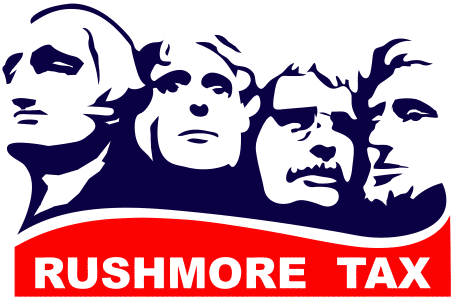
 Research
shows that larger companies like McDonalds Corp. spends
millions looking at traffic flows, urban sprawl, eating
patters, disposable incomes to determine where to build
their next successful restaurant.
Research
shows that larger companies like McDonalds Corp. spends
millions looking at traffic flows, urban sprawl, eating
patters, disposable incomes to determine where to build
their next successful restaurant.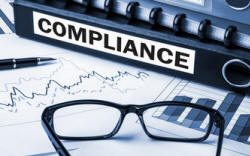 Tax
preparation is not sexy, but it is lucrative and at the
close of a day, making money is what you came into this
business for. It certainly helps to understand something
about businesses and how they operate.
Tax
preparation is not sexy, but it is lucrative and at the
close of a day, making money is what you came into this
business for. It certainly helps to understand something
about businesses and how they operate. Subway
franchisees are required to work in their own store. The
purpose of this is to ensure the store is successful.
No-one wants a store to succeed more than the owner and
thus Rushmore tax's philosophy is much the same.
Absentee owners only permit the office manager and tax
preparers to discount tax returns and make errors which
can be costly to both the owner and client. This is not
always the case but unless an effective office manager
is in place with tax expertise, it is wise for the owner
of the business to be the managing operator.
Subway
franchisees are required to work in their own store. The
purpose of this is to ensure the store is successful.
No-one wants a store to succeed more than the owner and
thus Rushmore tax's philosophy is much the same.
Absentee owners only permit the office manager and tax
preparers to discount tax returns and make errors which
can be costly to both the owner and client. This is not
always the case but unless an effective office manager
is in place with tax expertise, it is wise for the owner
of the business to be the managing operator. Like
every gambler, you have to spend money to make money.
Not that opening an tax office is like gambling but
similar to ANY business venture, it requires capital to
get the ball rolling. Money makes money and unless you
have some to start, the rest is just dreaming.
Like
every gambler, you have to spend money to make money.
Not that opening an tax office is like gambling but
similar to ANY business venture, it requires capital to
get the ball rolling. Money makes money and unless you
have some to start, the rest is just dreaming.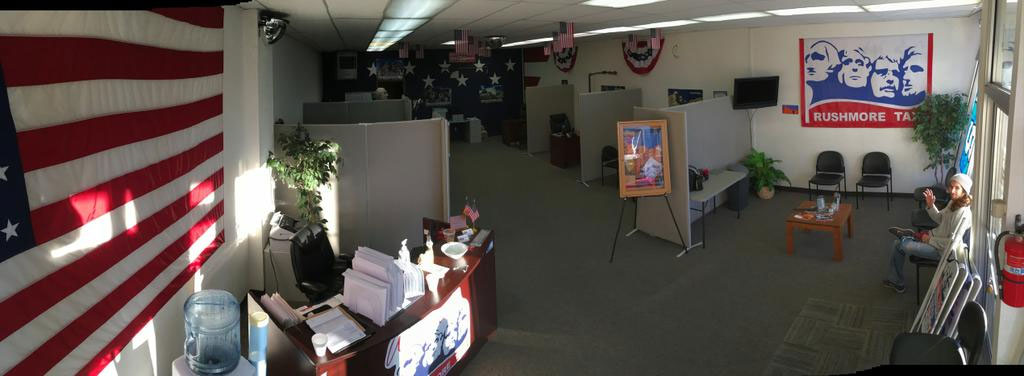
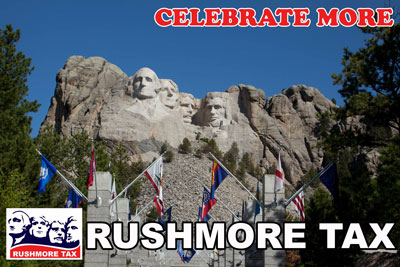 The
office area should be no greater than 1500 square feet
and no less than 800 square feet. This space
accommodates between four to eight desks of which each
can prepare up to 400 tax returns in a season. Carpet is
preferred over wood and especially tile.
The
office area should be no greater than 1500 square feet
and no less than 800 square feet. This space
accommodates between four to eight desks of which each
can prepare up to 400 tax returns in a season. Carpet is
preferred over wood and especially tile.
